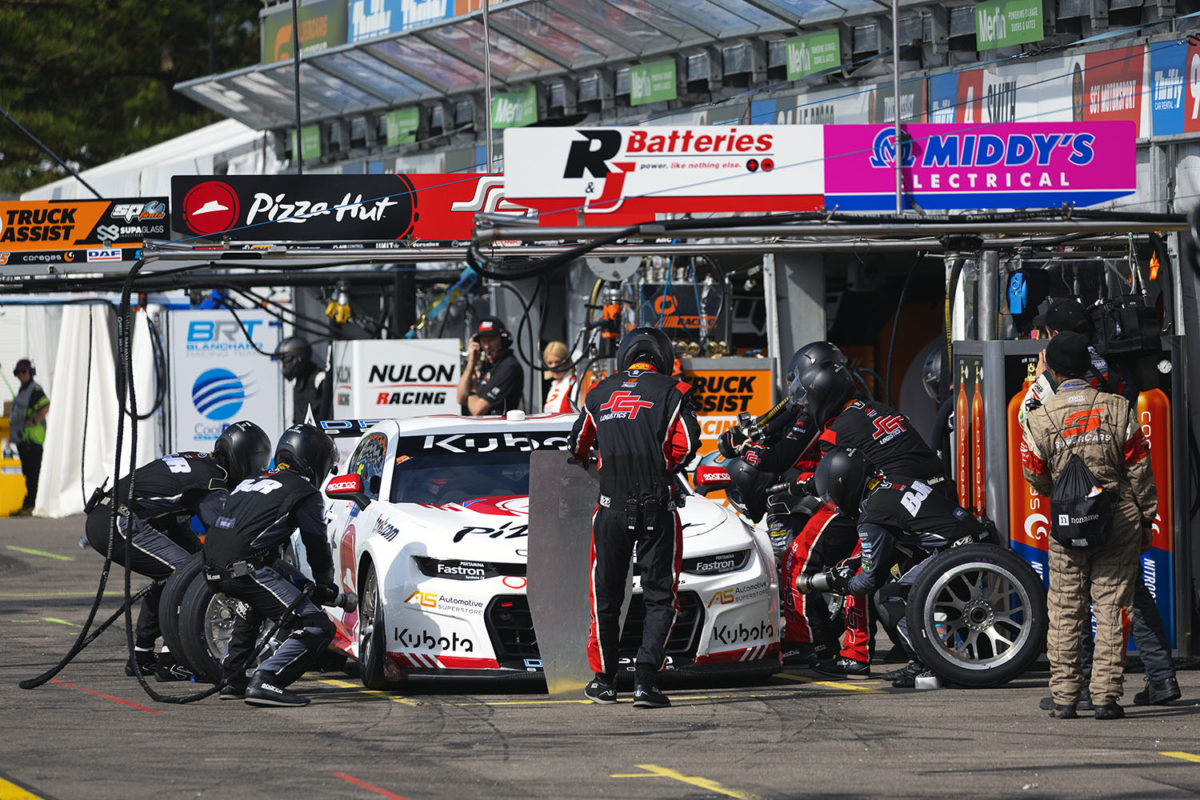

Supercars has removed compulsory pit stops from next week’s Penrite Oil Sandown 500 and the Repco Bathurst 1000.
As previously reported by Speedcafe, CPS requirements had been a point of intrigue for the first enduros of the Gen3 era, given the new breed of Supercars should have much longer fuel range than COTF/Gen2.
A three-stop minimum was mandated for the Sandown 500 for its seven years on the calendar during the previous technical era, but a requirement for any pit stops has been deleted altogether with the issuing of the Further Supplementary Regulations for the 2023 event.
Drivers will, of course, have to pit during the 161-lapper at the Melbourne circuit.
However, subject to the minimum 54-lap requirement for each driver, teams now otherwise have complete freedom with respect to their strategies (noting that maximum continuous driver time is less than typical total race time at Sandown anyway).
The Further Supplementary Regulations which teams have received today for the Sandown 500 reads as ‘N/A’ for the ‘CPS minimum requirements’ in terms of both number of stops, number of tyres to change, and fuel drop.
Any other requirements with respect to compulsory pit stops have also been completely deleted, and Supercars’ official website confirms the same applies to Bathurst.
It sets up a fascinating weekend at Sandown International Motor Raceway, considering there has been talk that it could be possible to complete at least 54 laps on a tank, and hence a co-driver could fulfil their driving requirements in a single stint.
If that is indeed the case, then a two-stop strategy is entirely feasible, although whether it would be optimal considering the wear of the super soft tyres and timing of Safety Cars is another question.
What Supercars’ decision does point to is the likelihood that there is no material difference in fuel economy between the Chevrolet Camaro and Ford Mustang, and hence no need to use sporting regulations to make up for a technical disparity.
The minimum CPS count was originally introduced to the enduros in 2013, the first year of the Car of the Future era, to eliminate (to the greatest extent possible) the strategic disadvantage for the quad cam-powered Nissans and Mercedes-AMGs against the pushrod-powered Fords and Holdens.
It would presumably have been retained this year if either of the Mustang, which is propelled by a 5.4-litre quad cam unit, and Camaro, which has a 5.7-litre pushrod under the bonnet, were a substantial way apart on fuel economy.
Just how far a full fuel load will stretch, noting that the cell is now 133 litres whereas the Gen2 cars carried 111-litre cells, is still a question mark.
That will affect how many stops are needed during the Bathurst 1000, although it is highly likely to be less than the COTF/Gen2 mandate of seven.
A compulsory brake pad (but not rotor) change remains at Mount Panorama, from the start of Lap 55 until the end of Lap 120, while teams also have scope to change pads at Sandown as well given two sets are allocated for the event.
Practice at Sandown starts on Friday week (September 15).




















Discussion about this post